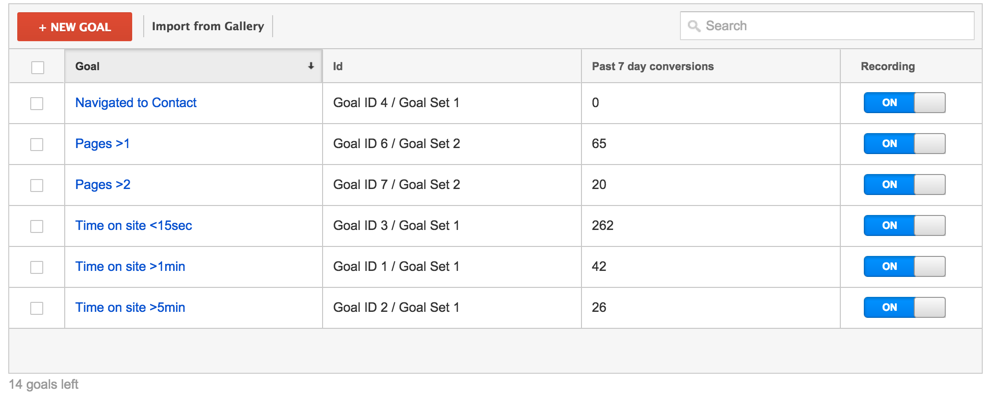Introducing the Blind Spots: Recognizing What Google Analytics Goals Can not Measure
In the world of electronic analytics, Google Analytics stands as an effective tool for tracking and assessing on the internet individual communications. However, amid its durable capabilities, there exist dead spots that usually escape measurement. Recognizing what Google Analytics objectives can not measure is vital for obtaining a detailed view of user behavior and interaction. As we dig into the details of these unseen areas, we discover a complex web of undiscovered areas that hold valuable understandings into customer actions and motivations, tough traditional knowledge and clarifying the limitations of our data-driven understanding.
Individual Behavior on External Platforms
Understanding how customers engage on exterior systems is vital for maximizing online techniques. Outside systems, such as social networks networks, referral websites, and online forums, play a considerable duty in driving traffic to a company's web site. By evaluating user behavior on these systems, services can get useful insights right into the performance of their marketing initiatives and the choices of their target market.
One trick facet of user actions on outside systems is the reference resource. By tracking where the users are originating from, companies can identify which platforms are driving one of the most traffic to their website. This information can help business allot their resources a lot more properly, concentrating on the platforms that generate the very best results.

Offline Communications and conversions
Examining user actions on external systems gives important insights right into on the internet techniques; nonetheless, considering offline conversions and communications is equally critical for an extensive understanding of a business's total performance. Offline conversions, such as in-store purchases or phone questions, play a considerable role in numerous businesses' success.

Attribution Beyond Last Click
When diving right into the realm of digital advertising and marketing analytics, it comes to be important to look beyond the single touchpoint of the last click for a more extensive understanding of attribution. While Google Analytics gives valuable understandings into customer habits, counting solely on last-click acknowledgment can be restricting - what data is google analytics goals unable to track. Acknowledgment versions that exceed the last click offer an extra nuanced sight of the consumer journey, considering all the touchpoints that cause a conversion
Attribution past the last click enables marketing experts to assign credit scores to numerous interactions along the conversion path, providing a more clear image of the effectiveness of various advertising and marketing networks. By exploring multi-touch attribution versions such as direct, time degeneration, or position-based attribution, services can better assign their advertising spending plans and optimize their approaches for maximum impact.
Understanding the influence of each touchpoint in the conversion procedure is important for making notified decisions see and taking full advantage of ROI. By accepting acknowledgment past the last click, businesses can obtain much deeper insights right into consumer actions and customize their advertising and marketing initiatives better.
Cross-Device and Cross-Browser Monitoring

In a similar way, cross-browser monitoring complements cross-device monitoring by recording user behavior as they switch over in between various internet internet browsers. Comprehending how individuals interact with sites on different internet browsers can help marketing experts optimize their online experiences to ensure consistency and performance throughout various platforms.
Qualitative Data and User Intent
Recognizing user intent via qualitative information evaluation is crucial for establishing targeted electronic advertising and marketing approaches that resonate with the requirements and preferences of the target market. Qualitative data gives understandings right into the 'why' behind individual activities, clarifying motivations, emotions, and choices that measurable data alone can not catch. By assessing individual feedback, comments, and communications, online marketers can uncover useful information about user intent, allowing them to tailor their messaging, material, and offerings to better line up with what their target market is looking for.
Qualitative information additionally helps in understanding the context in which individuals involve with a site or app. This contextual understanding makes it possible for marketers to create even more customized and relevant experiences, inevitably driving greater engagement and conversion rates. By diving into individual intent with qualitative data evaluation, organizations can get a deeper understanding of their target market, causing extra effective advertising and marketing approaches read this that satisfy individuals' requirements and expectations.
Conclusion
Finally, Google Analytics goals have restrictions in gauging user actions on outside platforms, offline conversions, acknowledgment past last click, cross-browser and cross-device tracking, and qualitative information connected to individual intent. what data is google analytics goals unable to track. It is essential for businesses to be knowledgeable about these blind areas in order to supplement their information analysis with various other tools and techniques to gain a much more comprehensive understanding of their target market and improve their general electronic advertising techniques
By evaluating customer actions on these systems, companies can gain useful understandings right into the performance of their advertising and marketing initiatives and the choices of their target audience.
Evaluating individual actions on external systems gives important understandings into on-line techniques; nevertheless, thinking about offline conversions and interactions is just as essential for a thorough understanding of a business's general performance.In digital advertising and marketing analytics, moving past last-click acknowledgment to explore cross-device and cross-browser tracking is essential for gaining an all natural understanding of user communications throughout various systems and gadgets. By examining individual comments, remarks, and communications, marketing experts can uncover important info about customer intent, enabling them to tailor their messaging, material, and offerings to better straighten moved here with what their audience is seeking.
By diving right into customer intent with qualitative information evaluation, organizations can obtain a deeper understanding of their target audience, leading to more effective advertising and marketing methods that fulfill individuals' assumptions and demands.